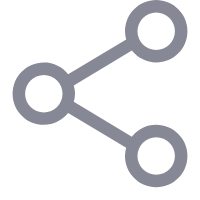

A、anterior communicating artery (前交通动脉) and posterior communicating arteries
B、original portions of the anterior cerebral arteries (大脑前动脉)
C、original portions of the middle cerebral arteries
D、original portions of the posterior cerebral arteries
E、terminal prtions of the internal carotid arteries
答案:ABDE



A、anterior communicating artery (前交通动脉) and posterior communicating arteries
B、original portions of the anterior cerebral arteries (大脑前动脉)
C、original portions of the middle cerebral arteries
D、original portions of the posterior cerebral arteries
E、terminal prtions of the internal carotid arteries
答案:ABDE



A. 肱动脉
B. 肱深动脉
C. 面动脉
D. 桡动脉
E. 股动脉
A. 臀大肌
B. 梨状肌
C. 闭孔内肌
D. 闭孔内肌
E. 臀中肌
A. 位于胸膜腔内
B. 容纳心和肺
C. 两侧为纵隔胸膜
D. 中纵隔内包括心和胸膜
E. 以胸骨角平面分为上、下纵隔
A. 中央为髓核,周围部为纤维环
B. 椎间盘以中胸部较薄,颈部较厚,而腰部最厚
C. 颈腰部的椎间盘前厚后薄
D. 椎间盘既坚韧,又富有弹性
E. 当纤维环破裂时,髓核易向前脱出
A. 幼年时共24块
B. 椎体位于椎骨的后部
C. 椎弓分为椎弓根和椎弓板两部分
D. 椎体与椎弓围成椎管
E. 由椎弓向后发出7个突起
A. 由腓总神经在腓骨颈上方发出
B. 沿腓骨长肌深面下行
C. 分支支配趾长伸肌
D. 分支支配腓骨长,短肌
E. 并分布于足背面皮肤
A. apex of bladder (膀胱尖)
B. fundus of bladder (fundus of bladder 膀胱底)
C. body of bladder
D. trigone of bladder (膀胱三角)
E. neck of bladder
A. 位于小腿外侧
B. 是短骨
C. 下端稍膨大,其内下的突起称内踝
D. 下端有关节盘附着,与距骨构成关节
E. 承受小部分的的重力传递
A. 位于角膜和巩膜交界处
B. 位于角膜和虹膜交界处
C. 位于虹膜和巩膜交界处
D. 位于虹膜和睫状体交界处
E. 房水由此产生
A. 颅前面
B. 颅侧面
C. 颅盖
D. 颅底外面
E. 颅底内面